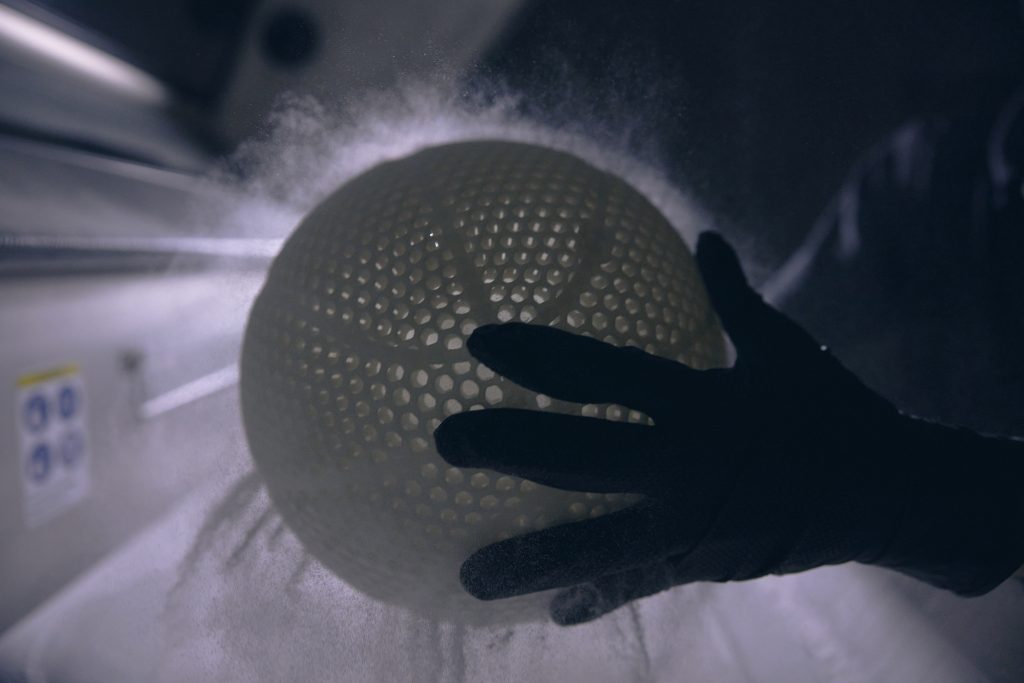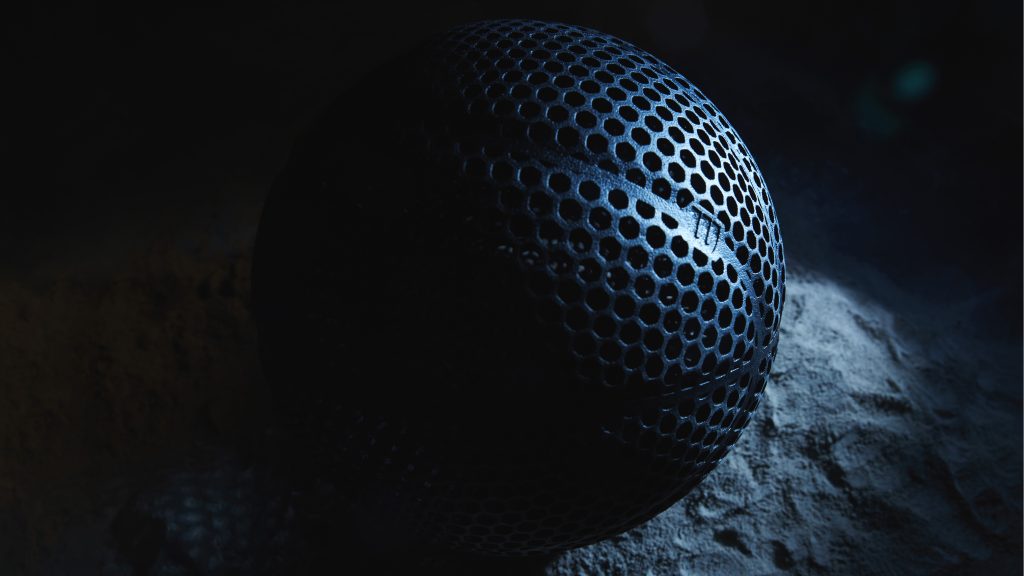Leading U.S. sports equipment manufacturer Wilson Sporting Goods Co. has unveiled an experimental prototype billed as the industry’s first 3D printed airless basketball. The airless ball was produced in collaboration with Chicago based 3D design specialists General Lattice, 3D printer manufacturer EOS, and post-processing company DyeMansion.
It is hoped that this prototype will not only demonstrate the possibility of manufacturing a basketball which doesn’t require inflation, but also the utility of additive techniques within the wider sporting goods sector. David Krzeminski, senior consultant with Additive Minds at EOS, has called the project “such a great technology showcase” of the creative applications of AM for prototyping and production with Wilson highlighting “the possibilities this ball represents”. One such possibility would be that of airless tires, something which tire manufacturer Michelin has already begun exploring through its airless Uptis tire prototype.
Wilson claims that the ball’s weight, size and rebound (bounce) nearly fit the performance specifications of a regulation basketball. The playability of the prototype was demonstrated by KJ Martin of the Houston Rockets at a recent NBA All-Star game, during the first round of the AT&T Slam Dunk contest. Martin called the event “really special”, stressing that the innovation offered by Wilson through this prototype “is so important to the future of basketball”.

A prototype developed through collaboration
GL Labs, General Lattice’s enterprise solutions service, worked closely with Wilson to transform the initial concept into a feasible product for manufacture. Using its computational design tools and workflows, the GL Labs team was able to efficiently streamline the design and iteration process.
Nick Florek, CEO at General Lattice, has praised the flexibility provided by GL Labs, claiming that it allows customers to “integrate data throughout the design process to reach optimal solutions faster”.
Following the design stage, the basketball was printed using an EOS P 396 SLS 3D printer. Finishing touches were then added by DyeMansion, who exploited their DeepDye Coloring and VaporFuse Surfacing technologies to produce the basketball’s outer skin and smoothed finished surface. The ball’s structure consists of a sea-through black lattice with eight panel-like lobes, ensuring that it does not need to be inflated to be used. Lester Hitch, Application Consultant at DyeMansion North America, highlighted the significance of this project, stating that re-designing the sport’s most critical element, the basketball, was “no small venture”.

Additive manufacturing and the wider world of sport
Wilson’s airless basketball continues the trend of additive technology being applied within the sports industry.
In 2021, sports equipment manufacturing giants Adidas continued a long-running partnership with 3D printing company Carbon to produce their 3D printed 4D midsole, the 4DFWD. Deploying their digital light synthesis (DLS) 3D printing technology, Carbon worked closely with Adidas designers to produce this optimized running midsole. Indeed, in mechanical testing conditions, the 4DFWD was shown to generate up to three times as much forward motion as previous models. This was followed later that year by a collaboration between Adidas and eyewear firm Marcolin Group which resulted in the release of the 3D CMPT. These 3D printed sport glasses weigh just 20g and, during their limited release run from August 2021, racked up a retail price of $415.
















































